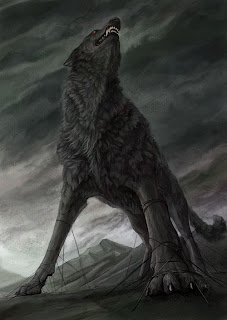La Collina di Tara (Temair) The Hill of Tara in the beautiful County of Meath, also known as Gaelic Temair, was once the ancient seat of power in Ireland. 142 seem to have been the king who ruled the island from here in both historical and prehistoric times. the king says that reigned there in prehistoric and historic. In ancient Irish religion and mythology, Temair was the sacred abode of the Gods and an important entrance to the Otherworld, which makes the area frequented by the Little People. In fact, the trees that are in the area is said which are regularly visited by the Fairies, takes its name Fairies Trees.
.JPG) |
| Faeries Tree - Hill of Tara |
It is said that St. Patrick's visit to Tara to confront the ancient religion just one of its holiest sites.
the early twentieth century, a group of Israelites came to Tara with the conviction that the mythical Ark of the Covenant was buried under the hill. They carry out some excavations in the "Mound of the Synod" in search of the Ark, but only a few coins were found in Roman times.
In 1950, official excavations have uncovered several holes which, presumably, could be the basis for the poles and in spirit, in the construction industry.
A new theory suggests that Tara is none other than the ancient capital of the lost kingdom of Atlantis. The mythical land of Atlantis was then Ireland, according to this fantastic view.
There are a large number of monuments and earthen structures on the hill of Tara, the first settlement site in the Neolithic age, and "Mound of Hostages" was built around 2500 BC.
More than 30 visible monuments on the site, and there are probably many who have no visible remains on the surface, and could be studied using non-invasive and detected by aerial photographs. Only two monuments at Tara have been Excavations: The Mound of the hostages in 1950, and Rath (Forte) of the Synod, at the turn of the nineteenth and twentieth century.
The Stone of Destiny
.JPG) |
| Lia Fail - Hill of Tara |
On top of the "King Seat" (Forradh) Temair to find the most famous of monuments of Tara, the most famous monuments of Tara, the Lia Fail, or Stone of Destiny ", the ancient stone used to crown the King of Ireland, according to mythology brought by the divine Tuatha De Danann, along with other 3 magical items: The Spear of Lugh's Sword Nuada and the Cauldron of Dagda.
It is said that the Stone roared when he was touched by the rightful King of Ireland.
Previously located just north of the "Mound of Hostages", the Lia Fail was moved into place after the Battle of Tara during the Irish Revolution of 1798 to mark the graves of 400 rebels who were massacred at that point of the hill. Some say that the Stone of Destiny was in the past, the cushion of the Old Testament Jacob (A wonderful example of religious syncretism between Christianity and Irish Old Religion).
A legend says that it is only one of four stones placed source in the direction of the cardinal points of Tara, and is Interestingly, the "Hall of Tara, the ancient political center of Ireland, is in North-South line with the monolith.
The Mound of Hostages
The "Mound of the hostages is a grave step, and is the oldest monument on the hill of Tara, which dates back to 2500 BC. The name comes from the High King of Tara to hold his court at the important people of the kingdoms subject, hostages to ensure their loyalty.
.JPG) |
| Mound of Hostages - Hill of Tara |
One the legendary King of Tara was called "Niall of the Nine Hostages" in recognition of the fact that he held hostage by a notable all the provinces of Ireland and Great Britain. The shift in
Mound is short, and is aligned on the Sun in early February and November, during the celebrations of the Celtic Samhain and Imbolc. fourth day of cross 8 November and 4 February, the ancient Celtic festival of Samhain and Imbolc.Appena after the entrance, on the left is a large decorated ortostrato.
I Menhirs the cemetery in the churchyard of the former church that stands at Tara, there are two standing stones which si ritiene essere piuttosto antichi, ultime vestigia di un più grande cromlech.
Antichi documenti riportano infatti che in quella porzione di collina sorgevano molte pietre, chiamate Dall, Dorcha, Maol, Bloc e Bluicna.
Il più alto dei due possiede alla base un'ncisione molto rovinata, che si crede che possa essere una rappresentazione della Fertilità, il Dio celtico Cernunnos, simile nella funzione alle tante Sheela-na-gig presenti in tutta l’Irlanda.
.JPG) |
| Menhirs del cimitero - Hill of Tara |
Le pietre possono essere datate al Neolitico, ma è più probabile that date from the Bronze Age. I remember Tara
Menhirs of another ancient legend that told of the custom according to which candidates for the throne had to drive their car at high speed towards the stones. If this was indeed predestined to reign would bring the cart safely between the two monoliths, menhirs otherwise the two would be approached by the aspiring usurper smash.








.JPG)
.JPG)
.JPG)
.JPG)

.jpg)